Being involved in a car accident that wasn’t your fault can be a traumatic and overwhelming experience. In the bustling regions of Riverside County and San Bernardino County, knowing what to do after a car accident not your fault is crucial to protect your rights and ensure you receive the compensation you deserve. This comprehensive guide will walk you through every step, from the accident scene to filing an insurance claim, and explain how a car accident lawyer can assist you in filing a car accident claim and navigating the complex legal landscape.
Your safety and that of others is paramount. Immediately after the car accident, check for any serious injuries among all vehicles involved. If anyone is injured, call 911 for medical treatment.
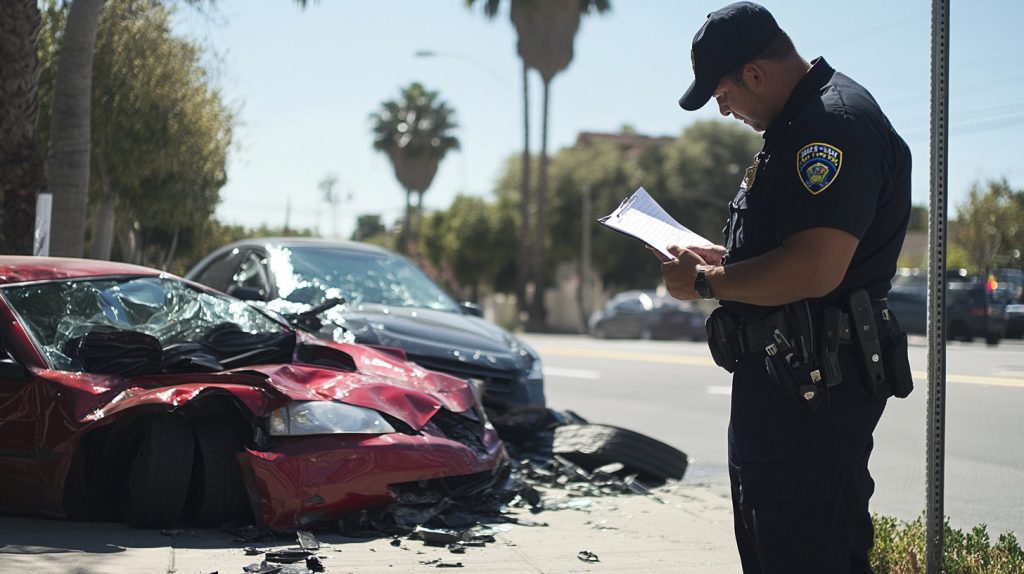
Even if the accident seems minor, it’s essential to contact the police. A police officer will document the accident scene and create a police report, which is invaluable when determining fault and filing an insurance claim.

Collect as much information as possible:
Take photos of the vehicle damage and property damage.
Note the time, date, and location where the accident occurred.
Document weather and road conditions.
Identify any traffic laws that may have been violated.
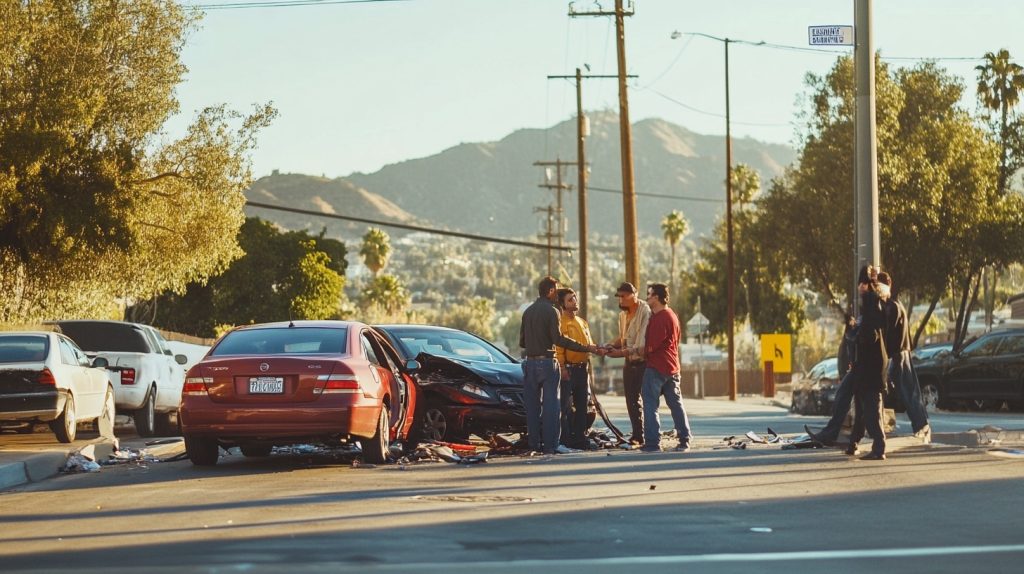
Obtain the other driver’s:
Name and contact information
Driver’s license number
Insurance details (company and policy number)
Vehicle make, model, and license plate number
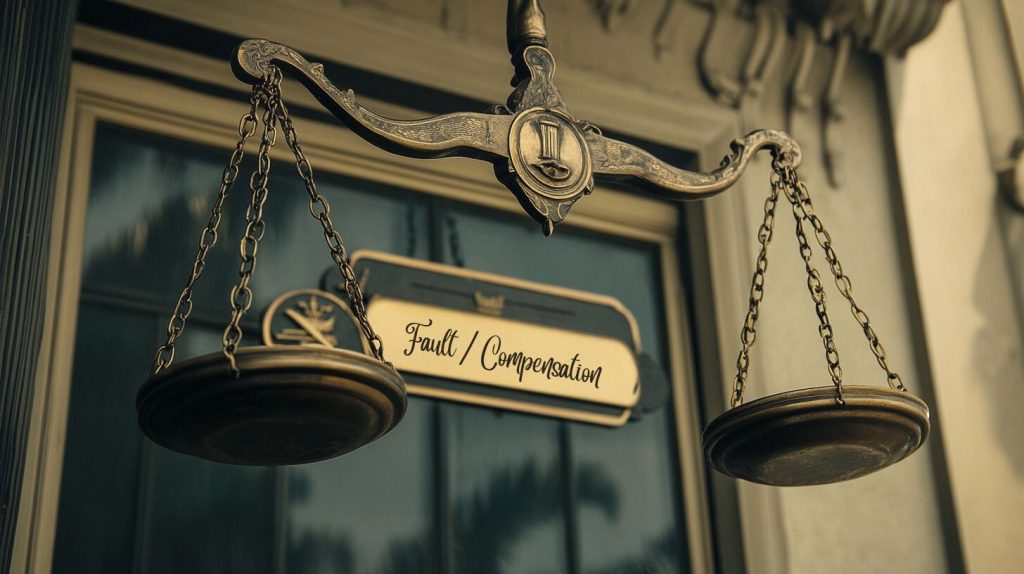
In California, establishing who is legally responsible for a car crash is crucial. The fault driver’s insurance company is typically responsible for covering medical expenses and vehicle repairs.
California follows a pure comparative negligence system. This means you can still recover damages even if you are partially at fault. However, your compensation will be reduced by your percentage of fault.
It’s crucial to contact your own insurance company as soon as possible after the accident, even if you weren’t at fault. This allows them to start their own investigation and protect your interests. Be prepared to provide them with all the details of the accident, including the police report, contact information of the other driver, and any witness information.
While it’s necessary to cooperate with the other driver’s insurance company, it’s important to be cautious. Their goal is to minimize their payout, so they might try to get you to admit fault or accept a low settlement offer. It’s highly recommended that you consult with a car accident attorney before giving any recorded statements or signing any documents from the other insurance company. An attorney can help you understand your rights and ensure you don’t accidentally jeopardize your claim.
If the other driver is at fault, you’ll need to file a third-party insurance claim with their insurance company. This claim seeks compensation for your damages directly from the at-fault driver’s insurer. To file a claim, you’ll typically need to provide documentation such as the police report, medical records, and repair estimates. It’s essential to keep detailed records of all communications with the insurance company throughout the process.
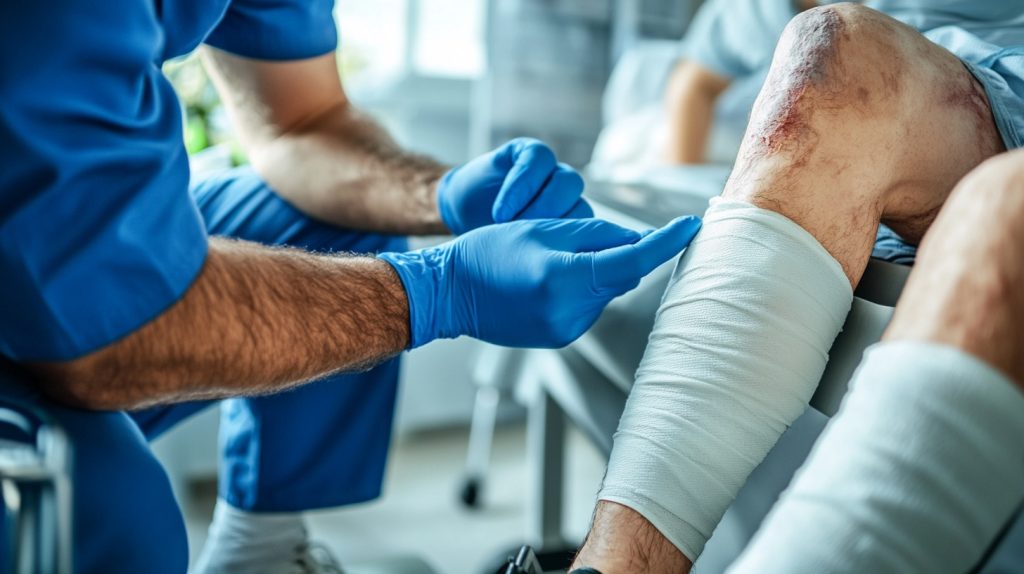
Even if you feel fine, some car accident injuries may not manifest immediately. A comprehensive medical exam can identify hidden injuries and document your medical expenses.
Keep meticulous records of all your medical expenses related to the accident. This includes everything from ambulance fees and emergency room visits to prescriptions, physical therapy sessions, and any other medical payments. These records will be vital when calculating the compensation you deserve for your injuries and recovery.

In a car accident where another driver is at fault, their insurance should cover your property damage. This includes the cost of repairing your vehicle and any other property damaged in the accident, such as personal belongings in your car.
It’s important to understand your own auto insurance coverage as well. Collision coverage pays for repairs to your vehicle, regardless of who was at fault in the accident. Comprehensive coverage, on the other hand, protects against damages not related to a collision, such as theft, vandalism, or natural disasters.

Unfortunately, not all drivers carry adequate insurance. Uninsured motorist coverage protects you if you’re hit by a driver who doesn’t have insurance, while underinsured motorist coverage comes into play when the at-fault driver’s insurance isn’t enough to cover your losses.
Personal Injury Protection (PIP) and Medical Payments coverage help pay for medical expenses, regardless of who caused the accident. These types of coverage can be valuable in ensuring you get the necessary medical care without worrying about immediate out-of-pocket costs.
When filing a claim with the at-fault driver’s insurance company, be prepared to provide thorough documentation, including the police report, medical records, and repair estimates. The insurance company will likely conduct their own investigation to assess fault and estimate damages.
Insurance claims can be complicated. Insurance adjusters often try to minimize payouts, and you may receive a low settlement offer. It’s important to remember that you don’t have to accept their first offer. This is where having a car accident lawyer can be incredibly beneficial.

A skilled car accident attorney can provide invaluable assistance throughout the entire process. They have the expertise to:
Establish Fault: Accurately determining fault can be complex. An attorney can investigate the accident, gather evidence, and reconstruct the events to build a strong case on your behalf.
Negotiate with Insurance Companies: Insurance companies have teams of lawyers working for them. Having your own legal representation levels the playing field and ensures your rights are protected. An attorney can handle all communication and negotiations with the insurance company, fighting for a fair settlement.
Maximize Compensation: An attorney can help you pursue the full compensation you deserve, including medical bills, lost wages, property damage, and pain and suffering.
At The Law Offices of Edgar Lombera, our car accident attorneys have extensive experience in Riverside and San Bernardino Counties. We offer:
Free Consultations: We’re happy to discuss your case and provide initial guidance without any obligation.
Personalized Legal Strategies: We tailor our approach to meet your specific needs and goals.
Assistance with Insurance Claims and Personal Injury Lawsuits: We handle all aspects of your case, from negotiating with insurance companies to filing a lawsuit if necessary.
Call us today:
Redlands Office: 909-915-0181
Palm Springs Office: 760-835-9353
If your injuries prevent you from working, you can claim lost wages as part of your compensation. This includes not only your current lost income but also potential future earnings if your injuries have long-term effects. Accurately calculating your total medical bills, including anticipated future expenses, is also crucial.

If negotiations with the insurance company fail to reach a fair settlement, filing a personal injury lawsuit may be necessary. Having an attorney by your side significantly increases your chances of a favorable outcome in court.
Bodily injury liability coverage is designed to compensate for injuries sustained in an accident caused by the insured driver. The at-fault driver’s insurance company should compensate you up to the limits of their policy.
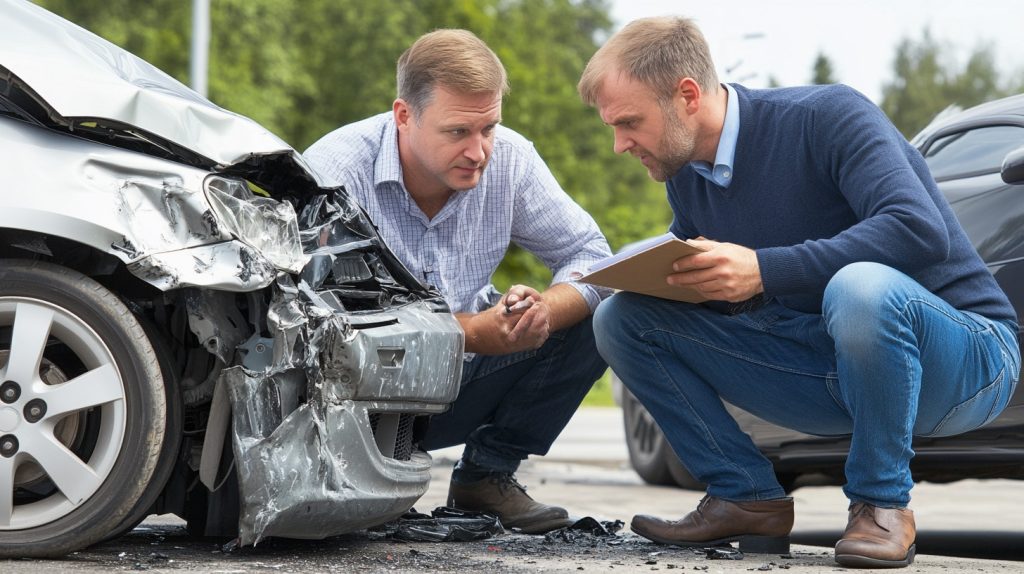
Insurance companies often employ tactics to reduce their payouts. They may delay or deny claims, try to use your statements against you, or pressure you into accepting a low settlement. Having a car accident lawyer protects your interests and ensures you’re treated fairly.
California is not a no-fault state. This means you have the right to file a claim directly against the at-fault driver’s insurance company to seek compensation for your damages. Understanding California’s insurance laws is essential for protecting your rights.

Avoid admitting fault at the accident scene: At the accident scene, focus on exchanging information and reporting the accident to the police. Don’t speculate about fault or apologize, as this could be used against you later.
Don’t sign any documents from the other driver’s insurer without legal advice: Avoid signing any documents from the other driver’s insurance company without first consulting with an attorney.
Keep a detailed record of all interactions: Document everything related to the accident, including photos, witness information, medical records, and all communication with insurance companies.
Being in a car accident that wasn’t your fault can be a life-altering experience. Understanding your rights and taking the right steps can make a significant difference in your physical and financial recovery. The Law Offices of Edgar Lombera are here to guide you through every stage of the process, ensuring you receive the compensation you deserve. Don’t navigate this complex process alone. Contact our expert car accident lawyers today for a free consultation.
If you’re hit by a driver who doesn’t have any insurance, you can file a claim with your own insurance company under your uninsured motorist coverage. This coverage is designed to protect you in situations where the at-fault driver is uninsured. It’s important to have this coverage because it can help pay for your medical bills, lost wages, and other damages.
Generally, if you’re not at fault for the accident, your insurance premiums shouldn’t increase. Insurance companies typically reserve premium increases for drivers who are found to be at fault in accidents. However, it’s always a good idea to discuss this with your insurance agent to understand your specific policy and any potential impact on your premiums.
In California, you have two years from the date of the accident to file a personal injury lawsuit. This is known as the statute of limitations. It’s important to act promptly after an accident to ensure you don’t miss any deadlines.
While it’s technically possible to handle an insurance claim on your own, it’s often not advisable, especially if you’ve suffered significant injuries or damages. Insurance companies have experienced adjusters whose goal is to minimize payouts. A car accident lawyer can level the playing field, protect your rights, and negotiate for a fair settlement on your behalf.
A third-party claim is an insurance claim that you file with the at-fault driver’s insurance company. It’s called a “third-party” claim because you are the third party involved (the first party being the at-fault driver and the second party being their insurance company).
Collision coverage is optional in California. However, it’s highly recommended, especially if you have a newer or more valuable vehicle. Collision coverage pays for repairs to your vehicle, regardless of who was at fault in the accident. Without it, you would have to pay for those repairs out of pocket if you were at fault or if you were unable to recover compensation from the at-fault driver.
In no-fault states, each driver’s own insurance company covers their medical expenses and lost wages, regardless of who was at fault in the accident. California is not a no-fault state. Here, you have the right to file a claim with the at-fault driver’s insurance company to seek compensation for your damages.
Fault is determined based on a variety of evidence, including:
Police report: The police officer’s report will often include their assessment of who was at fault, based on their investigation at the scene.
Witness statements: Statements from people who witnessed the accident can provide valuable information about how the accident occurred.
Physical evidence: This includes photos and videos of the accident scene, vehicle damage, and any other relevant physical evidence.
Traffic laws: Determining who violated traffic laws is a key factor in establishing fault.
If the insurance company denies your claim, don’t give up. Consult with a car accident attorney immediately. They can review your case, investigate the reasons for the denial, and explore your legal options, which may include filing a lawsuit.
Yes, in California, you can seek compensation for pain and suffering as part of your personal injury claim. This includes not only physical pain but also emotional distress, anxiety, and loss of enjoyment of life caused by the accident and your injuries.
Facing the aftermath of a car accident not your fault? Let us help you navigate the legal maze and fight for the compensation you deserve. Call us now at 909-915-0181 or 760-835-9353 for a free case evaluation.